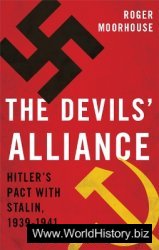The theory of consequence (consequentia) was a field of logic investigating how something follows (sequor) from something. ‘‘Consequence’’ was a wide notion that could be applied even to mean just term inclusion, but in logical theory it usually denoted the relation of following between propositions. This is obviously a crucial issue for logic, and both the Aristotelian syllogistics and the Stoic propositional logic provided background for the medieval development. The Latin term consequentia is from Boethius, who was aware of both of these traditions and studied propositional inferences among ‘‘hypothetical syllogisms.’’
A consequence consists of component propositions, the antecedent and the consequent, and some element marks them as so conjoined that the latter follows from the former. A modern reader will immediately ask what kind of relation is meant with this ‘‘following’’: is the consequence a conditional sentence, or an entailment, or an inference? But this question has proved extremely complicated, and perhaps no full answer is available, since the medieval classifications were not the same as ours and the authors differed in their opinions. Scholars have often emphasized the nature of medieval consequences as conditionals (if p, then q); indeed, this is how medieval logicians often express their consequentiae, and hence they have been read as complex propositions. More recently a different interpretation has gained ground: at least in the best era of consequence theory, consequences seem to function like inferences (p; thus q). Note, for example, that an acceptable consequence is usually called, not true, but ‘‘good’’ (bona), or such a consequence ‘‘holds’’ (tenet, valet). And the study of consequences appears in its own place in treatises, separate from hypothetical Propositions. Its nature was inferential, though even the close logical connection between conditionals and inferences was well known at least in the fourteenth century. However, consequential inferences could be expressed as conditionals if the conditional was to be read as “metalinguistic”: ‘‘if p is asserted, it is correct to assert q.’’ (Buridan’s preferred view seems to be like this.)
For simplicity, let us first give a rough outline of the external historical development and only then go to substantial matters.
After Boethius, the word consequentia was frequently used, though without further theoretical import. In the earliest era of logical theory, Garlandus Compotista classified consequences according to the truth-values of their members; he also stated explicitly the leading principle that no consequence with a true antecedent and a false consequent can be true. (He discussed these questions in the context of hypothetical propositions.) Abelard then made relations of consequence and inference a central subject in his Dialectica. There the theory had already achieved considerable philosophical sophistication. Abelard’s findings were radical, since he was clearly aware of the special logical character of necessary consequence and excluded all relations that were less binding.
Consequences did not figure as a separate subject in the foremost textbooks of the thirteenth century, though they were applied and commented upon in some chapters; apparently the theme was well-known. The distinct genre of consequence theory was born after that. Its source is somewhat puzzling; it has often been assumed that it originates from topics, but the concrete links to the thirteenth-century topical literature remain questionable. Anyway, the investigation of consequences by themselves began around 1300, and a few short treatises De consequentiis from that time have survived. The idea of the emerging theory was to express some fundamental features of consequence relations as a distinct subject and in as general a form as possible. The initiative clearly gained immediate response, since consequences were soon an established branch of logical inquiry. Its most creative period was perhaps 1320-1340, when three leading philosophers wrote, arguably, the most important contributions to it: Walter Burley’s De puritate artis logicae (two treatises), William Ockham’s Summa logicae, Part III-3, and John Buridan’s Tractatus de consequentiis.
After the central problems had thus been explicated, the theory was carried on, both by Englishmen and by Buridan’s continental followers, and its interpretation also caused some interesting philosophical debate. The later fourteenth century achieved remarkable elaboration in the study of consequences, and the results of this process found their place in textbooks (e. g., in the influential books of Ralph Strode and Paul of Venice). The commenting and qualifying discussion continued during the whole fifteenth century, mainly in Italy. The last contributions were after 1500; then the authors were mainly interested in counterexamples and special cases.




 World History
World History









